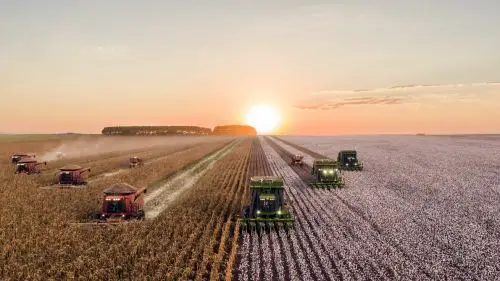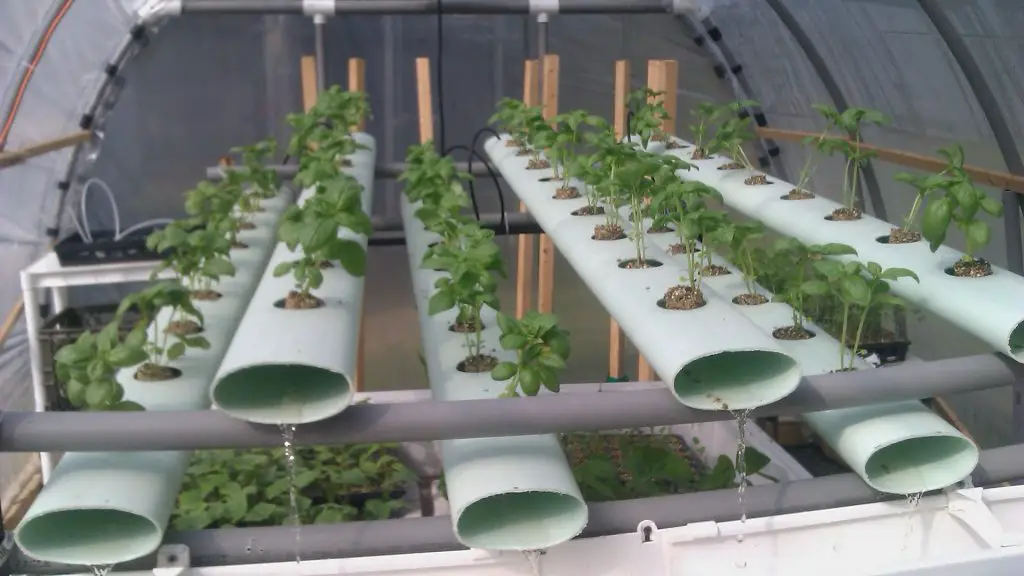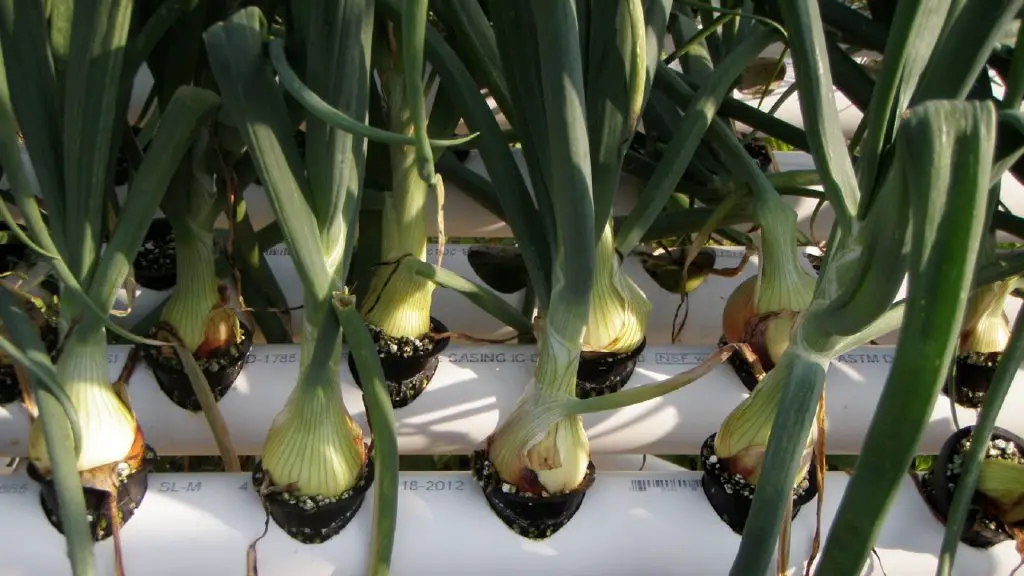Many people have heard the term hydroponics, and a few of these might have heard that it is an excellent way of growing vegetables without using soil. They might not know that these vegetables can grow much faster while delivering larger yields when it comes to harvesting. Something else they often ponder over is the reason why this is possible.
Why do hydroponics grow faster and increase yield? The answer is straightforward. The right plants grow fast with the right hydroponic system, balanced nutrient mixes, and perfect light exposure. When you negate pests, and bad weather and use automation to the best effect, your yields will go sky-high.
Are you interested in finding out what it takes to grow crops twice as fast as in soil, and do you want to see how you can grow all year round in less space than it would take in your garden? Carry on reading, and see how easy it is to answer these questions with your system.
Why Do Hydroponic Plants Grow Faster?
Types of Hydroponic Systems
There are many types of hydroponic systems you can purchase, or build, and each can be better for some plants than others. When you have the right system, plants can mature 25% faster while delivering a 30% increase in yield. Here are a few of the more common system types.
- Deepwater Culture (DWC) – This reservoir method is seen as the easiest hydroponic method of growing plants. Roots are suspended in the nutrient solution while oxygenated by an aquarium pump. A Deepwater Culture system has fewer parts which can clog and require cleaning.
- NFT (Nutrient Film Technique) – In this system, there is a continual flow of the nutrient solution which runs across the top of your plant roots. The system is slightly tilted, and gravity is used once the water has been pumped to the highest level. Because root tips are the only part in the nutrient film, plants receive more oxygen which aids faster growth.
- Wick System – For this hydroponic system, you need a container for your plant, a reservoir to hold your nutrient mix, a growing medium (coco coir or perlite), which absorbs water from the wicks and your wick material like rope, string or a strip of felt. This is the easiest method because there are no moving parts. Nutrients move up the wick and into the root system of your plants.
- Ebb & Flow – These flood and drain systems are a great way to grow plants. The grow bed becomes flooded at intervals, and then the nutrients drain back to the reservoir. The pump can be put on a timer so the process is automated and plants get the correct nutrients. The dry spells encourage roots to grow longer while they search for water. As they grow, they absorb more nutrients and grow faster.
Lighting for Hydroponics Systems
Lighting is one key element that dictates plant growth. Plants require up to sixteen hours per day of light. When using grow lights, you control the light plants receive, so this is why all year-round growing can occur regardless of what is happening outdoors.
- Blue light – around the 430 nm range is where plant photosynthesis occurs
- Red light – around 660 nm, a plants germination, growth in its stem and flowering can thrive
- Infrared light – around 735 nm also helps with a plants growth from germination to harvest
White fluorescent tubes or the newer LED light panels cover these wavelengths and are ideal for mimicking the sun’s natural light. When you have a good hydroponic lighting system, hydroponic yields can increase by 1x – 2x.
Control Nutrients for Faster Hydroponics Growth and Higher Yields
When plants grow in soil, the roots have a hard time finding the right nutrients. The earth can be compacted, so the speed of growth is slow, and this has an overall effect on the nutrients plants can find. The spacing of plants also has an impact because once they grow too close together, there is contention for nutrients in that growing area.
There is only a small proportion of water used by the plants in soil growth, and the rest goes by the wayside. This is the same for nutrients that enter the soil from such watering. When there is a recirculating reservoir of nutrients, such as in Deep Water Culture kits, the plants can take as many nutrients as they need.
When you choose the best hydroponic nutrients for the type of plants you are growing, you can significantly increase yields. Conventional fertilizer lacks the correct ratio for a hydroponic setup. When you purchase the optimum nutrients, you then need to look at maintaining the strength of nutrient mix (PPM’s or EC), the correct pH levels, and the nutrient temperature of 65 to 75 degrees Fahrenheit to give you faster growth and larger yields.
Hydroponic Plants that Grow Fast
Many elements affect how fast plants can grow, and how big your yields will be. With this in mind, one element often becomes overlooked, the plants themselves. Hydroponics isn’t suitable for all vegetable types, but some excel when grown hydroponically. Here are a handful of the best yielders and fastest growers when grown in a hydroponic system.
- Leafy greens – This variety can be ready in as little as one month after germination in an effective hydroponic system. These can include watercress, spinach, mustard greens, kale, and Swiss chard. Because they grow so fast, you need to harvest earlier, so plants have no chance to bolt and become bitter.
- Herbs – These are ideal for growing indoors with natural light. When raised in a hydroponic system, they can benefit from a 25% growth rate. Basil, oregano, marjoram, peppermint, and spearmint are the most common varieties. Many can be plucked as needed, and in the case of mint, the more you pick, the more it grows.
- Lettuce – Head lettuce varieties take longer when grown in soil, but when they are grown in a hydroponic system, they will be ready in around 6 – 8 weeks. Most common head varieties are Iceberg.
- Leafy Lettuce – Romaine, Bibb, and Buttercrunch are rapid growers when grown with conventional methods, but put them in a hydroponic system, and they become supercharged and can grow in as little as three weeks.
It should be noted; plants won’t grow or yield extra by being in a hydroponic system. They merely can develop to their genetic maximum.
Weather, Pests, Automation and Growing Space
Although mother nature does wonders for every living thing, it can make it hard for plants in specific regions. Hydroponics is excellent because it can be carried out in a greenhouse, undercover or a hydroponic grow tent where there is no impact from the weather outside. As an aside, this enables your plants to grow faster. You can grow all year round when you control the environment and increase yields dramatically.
When you have a hydroponic system, the space required is far less than is required by conventional growing methods. Now the roots are not fighting for nutrients in the soil. The only limiting factor to how close they can grow together is being shaded by the next plant. Hydroponics can return yields almost four times as much as similar space in the soil.
Compared to soil gardens, a hydroponic system is a pretty sterile environment. Pests and infestations are drastically reduced, which are introduced through the soil. Plants are given an easier route to grow faster and produce yields from leaves that would commonly be damaged or eaten by pests.
Automation is one of the hydroponic beauties once you have set it up. Pumps can be set on timers and depending on where your system is located, you can configure your lighting timer to come on as the sun goes down. Even temperatures in your growing area can be automated to heat or cool as required. It might cost money, but these costs are well worth it when you see bountiful crops in half the time of a natural garden.
Frequently Asked Questions
Hydroponics vs. Soil Yield
If you are growing with similar conditions, then your hydroponics plants can grow from between 30% – 50% faster than soil-based plants. The nutrients you add are as good as anything in the soil and are available precisely as your plants require.
Can you grow hydroponics outdoors?
Outdoor hydroponics will provide half of what is required for your plants to thrive. All you need to make sure is your reservoir is undercover where rain won’t dilute your nutrient mixture. You can also grow plants closer together, and there will be no weeds you need to fight.
What is the best fertilizer for hydroponics?
Conventional farmers use dry fertilizer, whereas home growers find liquid fertilizers serve their needs much better. A good premixed liquid fertilizer can deliver high amounts of nitrogen and essential minerals, which will help increase the yields of your plants while being economical to use.





